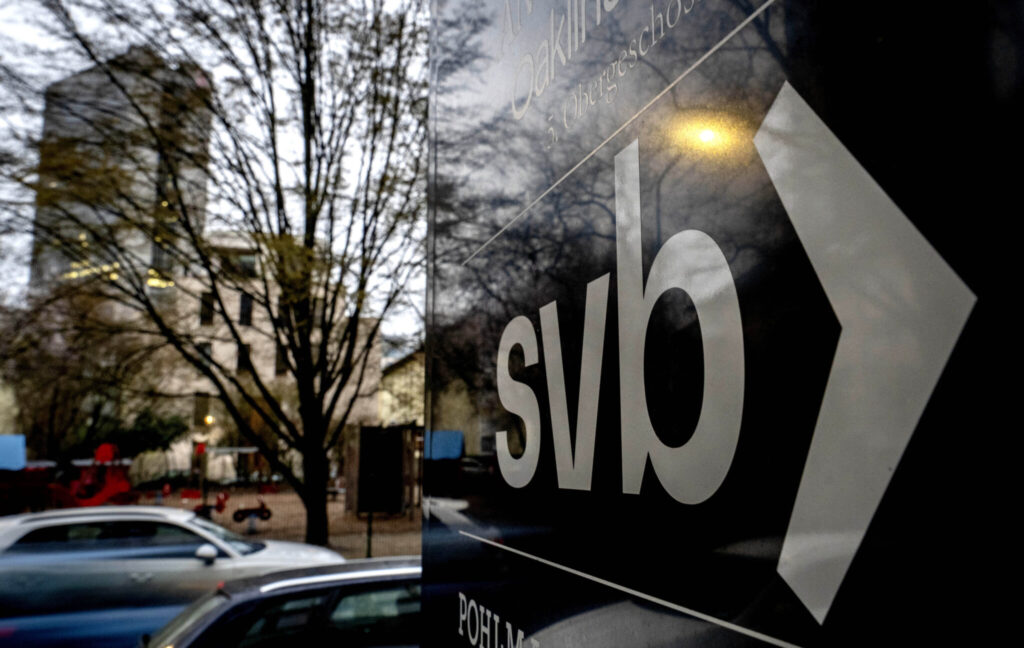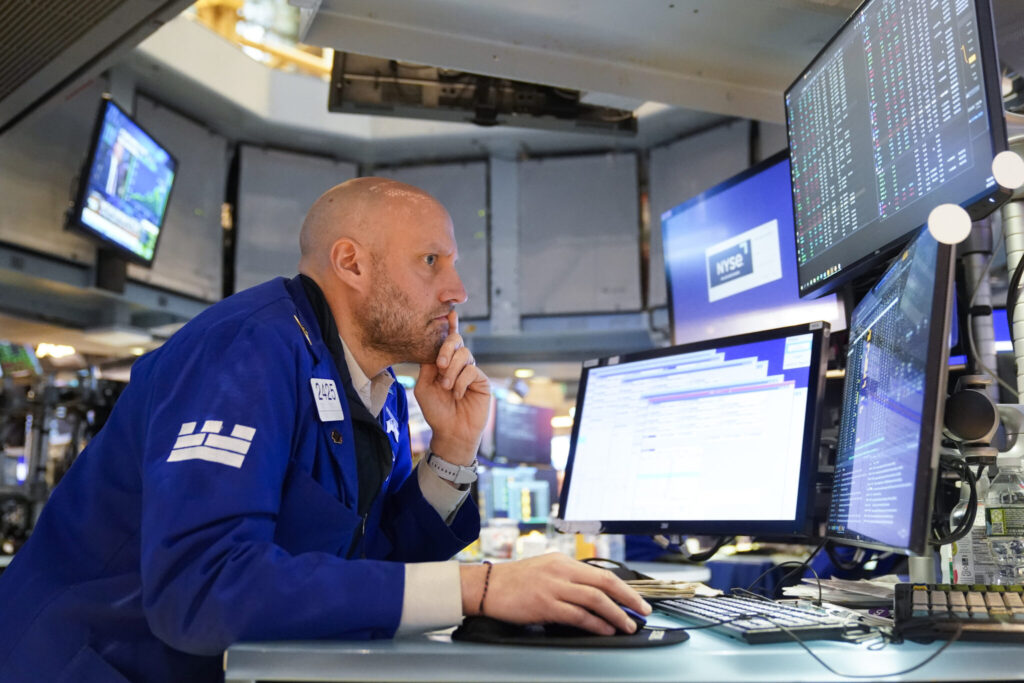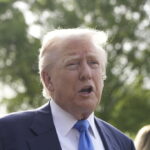U.S. stock indexes fell on Monday as the collapse of Silicon Valley bank fanned fears of a contagion with trading halted in several banks, while expectations rose for a pause in interest rate hikes by the Federal Reserve in March. The sudden shutdown of SVB Financial (SIVB.O) on Friday after a failed capital raise triggered concerns about risks to other banks from the Federal Reserve’s sharpest rate hike cycle since the early 1980s. The Associated Press has the story:
Wall St.: Bank stocks plunge, S&P 500 swings
Newslooks- NEW YORK (AP)
Wall Street is worried about what may be next to topple following the second- and third-largest bank failures in U.S. history, and stocks are swinging sharply Monday as investors scramble to find someplace safe to park their money.
The S&P 500 was virtually unchanged in morning trading, but only after tumbling 1.4% at the open. The sharpest drops were again coming from banks. Investors are worried that a relentless rise in interest rates meant to get inflation under control are approaching a tipping point and may be cracking the banking system and broader economy.
The U.S. government announced a plan late Sunday meant to shore up the banking industry following the collapses of Silicon Valley Bank and Signature Bank since Friday.
The most pressure is on the regional banks one or two steps below in size of the massive, “too-big-to-fail” banks that helped take down the economy in 2007 and 2008. Shares of First Republic plunged 66.3%, even after the bank said Sunday it had strengthened its finances with cash from the Federal Reserve and JPMorgan Chase.
“So far, it seems that the potential problem banks are few, and importantly do not extend to the so-called systemically important banks,” analysts at ING said.
The broader market was holding up better as expectations built that the all the chaos means the Fed would have to take it easier on its economy-rattling hikes to interest rates. The Dow Jones Industrial Average was up 94 points, or 0.3%, at 32,004 as of 10 a.m. Eastern time, while the Nasdaq composite was 0.1% higher. Both erased sharp earlier losses.

Stock markets were mixed in Asia after the U.S. government announced its plan to protect depositors at banks, but the losses deepened as trading headed westward through Europe. Germany’s DAX lost 3.3% as bank stocks across the continent sank. On Wall Street, a measure of fear among stock investors touched its highest level since October.
Among the few investments to climb in price was gold, as investors looked for anything that seemed safe. It rose 2.3% to $1,910.50 per ounce.
Prices for Treasurys also shot higher on both demand for something safe and expectations for an easier Fed. That in turn sent their yields lower, and the yield on the 10-year Treasury plunged to 3.51% from 3.70% late Friday. That’s a major move for the bond market. It was above 4% earlier this month.
The two-year yield, which moves more on expectations for the Fed, had an even more breath-taking drop. It fell to 4.12% from 4.59% Friday.
Some investors are calling for the Fed to make emergency cuts to interest rates soon to stanch the bleeding. The wider expectation, though, is that the Fed will likely pause or slow its increases.
Traders are betting on a nearly four-in-five chance that the Fed will hike its key overnight interest rate by 0.25 percentage points later this month at its next meeting. They’re also now betting on a 21% chance that it will hold steady, according to CME Group.
That’s a sharp turnaround from earlier last week, when many traders were betting on the Fed reaccelerating its hikes and increasing by 0.50 percentage points because of how stubbornly sticky high inflation has been.
“At this point in time, depending on reactions in financial markets and eventual fallout on the overall economy, we wouldn’t rule out that the hiking cycle could even be over and that the next move by Fed officials may be lower not higher,” said Kevin Cummins, chief U.S. economist at NatWest.
Higher interest rates can drag down inflation by slowing the economy, but they raise the risk of a recession later on. They also hit prices for stocks, as well as bonds already sitting in investors’ portfolios.
That latter effect is one of the reasons for the worries about the banking system. The Fed began hiking interest rates almost exactly a year ago, and it’s instituted the sharpest flurry in decades. Its key overnight rate is now at a range of 4.50% to 4.75%, up from virtually zero.
That has hurt the investment portfolios of banks, which often park their cash in Treasurys because they’re considered among the safest investments on Earth.
The collapse of Silicon Valley Bank has reverberated around the world.
In London, the government arranged the sale of Silicon Valley Bank UK Ltd., the California bank’s British arm, for the nominal sum of one British pound, or roughly $1.20.
While the bank is small, with less than 0.2% of U.K. bank deposits according to central bank statistics, it had a large role in financing technology and biotech startups that the British government is counting on to fuel economic growth.
Germany’s financial regulator, BaFin, on Monday prohibited asset disposals and payments by Silicon Valley Bank’s German branch and imposed a moratorium, effectively shutting it for dealings with customers.
Before trading began in Asia, the U.S. Treasury Department, Federal Reserve and Federal Deposit Insurance Corp. said Sunday that all Silicon Valley Bank clients will be protected and have access to their funds and announced steps designed to protect the bank’s customers and prevent more bank runs.
Regulators on Friday closed Silicon Valley Bank as investors withdrew billions of dollars from the bank in a matter of hours, marking the second-largest U.S. bank failure behind the 2008 failure of Washington Mutual. They also announced Sunday that New York-based Signature Bank was being seized after it became the third-largest bank to fail in U.S. history.







